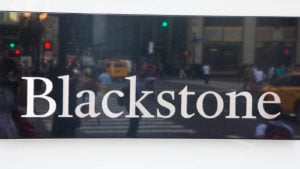[Editor’s note: “7 Top-Tier Dividend Stocks for 2020” was previously published in March 2020. It has since been updated to include the most relevant information available.]
The recent downturn is a start reminder that, while it’s great to have strong growth stocks, it’s also important to get some income in the mix.
Usually, these stocks are based in solid sectors that reflect a strong U.S. economy and deliver inflation-beating dividends, so that you can reinvest … or simply pocket the cash.
I’ve run my Portfolio Grader screens, and these seven top-tier dividend stocks for 2020 are all A-rated winners, that are perfect fits in anyone’s portfolio.
Dividend Stocks: The Carlyle Group (CG)

Dividend Yield: 4.41%
The Carlyle Group (NASDAQ:CG) was set up in 1987, almost as a private equity firm for Washington, D.C. political veterans and their families. One of the more famous names is the Bush family.
But those legacy political families also brought along other legacy political families from around the world.
It was firm that would manage their money using alternative assets like real estate, corporate financing and natural resources. And the clients had a pretty good idea of what was happening in the world to help the company pick investments.
Now, it’s a larger business and has much bigger fish in its pond from Wall Street. But it has still maintained its quality, even at an $11 billion market capitalization.
Omega Healthcare Investors (OHI)

Dividend Yield: 8.73%
Omega Healthcare Investors (NYSE:OHI) is a real estate investment trust (REIT) that focuses on triple net leases in the nursing home and assisted living facility space.
The graying of the baby boomers is a significant demographic shift and this industry sector is going to play an enormous part.
As a triple net lease operator, OHI leases properties to companies that run the businesses, and Omega isn’t responsible for property taxes, maintenance or insurance. That means it doesn’t have to spend a lot of cash to keep these properties going, which helps boost funds from operations.
As the broader economy slows, this sector will continue its steady growth, because the population is aging and will need more medical services in the coming years.
Blackstone Group (BX)

Dividend Yield: 3.49%
Blackstone Group (NYSE:BX) is a massive investment and fund management services company that runs its own private equity funds in various sectors, including real estate and even private real estate investment trusts.
It’s the largest alternative asset management firm in the world. What does that mean? Basically, alternative assets are anything that isn’t a stock, bond, commodity or derivative.
That means its energy fund is about owning energy properties or land leases where energy companies drill. Its real estate division owns real estate and land that is bundled into a sector (commercial, tech, healthcare) and then shares are sold to hedge funds and high net worth individuals.
Mid-America Apartment Communities (MAA)

Dividend Yield: 3.42%
Mid-America Apartment Communities (NYSE:MAA) operates as REIT, and focuses on multi-family apartment communities in the Southeast, Mid-Atlantic and Southwest U.S.
Currently, it operates over 100,000 units in more than 300 communities in 17 states. Most of its communities are built for career professionals who are looking for comfort, amenities, style and convenience without having to pay a premium for it.
This is a good sector because it is an ideal Gen X and millennial play on the housing market. Given the student debt many carry, and their memories of the housing market crash, renting in a nice community is an attractive idea.
Also, until they settle down, being able to move for opportunity is a big part of their lives, and renting is much less a hassle than buying and then having to sell before you leave.
General Mills (GIS)

Dividend Yield: 3.22%
General Mills (NYSE:GIS) has been around since 1866, and is one of the top consumer staples companies in the world.
Classic American brands like Betty Crocker, Pillsbury, Wheaties, Cheerios, Old El Paso, Green Giant and Yoplait are just a handful of examples.
A few years back, this sector, especially the big consumer staples companies, had to reimagine themselves for the newer generations of consumers. The old baby boomer brands weren’t drawing the Gen Xers or millennials.
It took a while to turn the ship, but GIS is on its way back. It added new, health-conscious brands (like Annie’s and Blue Buffalo) and also moved into Asian and Latino brands to address a changing American demographic.
Southern Company (SO)

Dividend Yield: 4.65%
Southern Company (NYSE:SO) is the second-largest utility in the U.S. It provides electricity to customers in Alabama, Georgia, Florida and Mississippi.
It also has natural gas distribution channels through a number of other states, and significant solar power facilities as well.
SO stock has been around since 1945 and is well-positioned to grow its business and deliver new solutions to the region’s energy needs.
A few years back it attempted to build the first new nuclear power plant in decades, but regulatory issues turned the project into a nightmare. Fortunately, its base of 4.7 million customers and patient state regulators gave it some cushion.
But now those days are behind it and SO is doing well with its natural gas business and alternative energy work.
Target (TGT)

Dividend Yield: 2.25%
Target (NYSE:TGT) is big-box retailing royalty, going back all the way to 1902.
This pick is all about the U.S. consumer. Well, it’s a little about how Target overcame some pretty significant obstacles in transitioning to new generations of consumers, including grocery offerings and e-commerce.
Five years ago, a lot of Old-School businesses were on the cusp of relevancy. You can see that by the fate of many department stores and retailers. Getting management to shift their thinking to new consumer trends was difficult because the model that brought them success was safe.
But failing to adapt was even more dangerous. And TGT finally go it. It pivoted and the success is showing up in the stock, as it has brought back consumers, added new lines of products and become more nimble.
Its dividend may only be 2.25% at this point, but it’s worth it since this long-term holding will deliver growth and income for a long time to come at this point.
Louis Navellier had an unconventional start, as a grad student who accidentally built a market-beating stock system — with returns rivaling even Warren Buffett. In his latest feat, Louis discovered the “Master Key” to profiting from the biggest tech revolution of this (or any) generation. Louis Navellier may hold some of the aforementioned securities in one or more of his newsletters.
